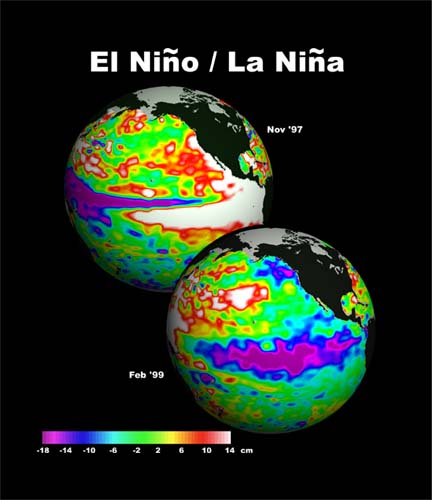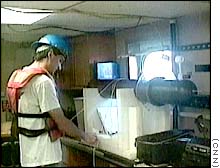What scientists do
|
Scientists need to be able to predict an El Nino event, so that people and governments can prepare for the weather conditions (such as droughts or floods) that might occur. Some work on boats, like this man, and some work on shore. |
|
Scientists lay out many buoys like
this one, which record information such as water
temperature, and send it back to their computers. Then they
can put the figures together and see if they make a
pattern. Sometimes they use probes which sink
below the surface, collect information, and then float back
up to send the information back.
Scientists compare areas of ocean
and chart how warm they are, so they can see if an El Nino
or La Nina event is likely to occur. In this diagram you can see the El
Nino event in November of 1997. Below it, is the La Nina
event of February 1999. Look at the differences in the
temperature of the water, using the scale. The scale below shows where the
ocean level is higher in places, and also warmer. So the
white, red and yellow areas are warmer than the blue and
purple areas.


Back to
Top
